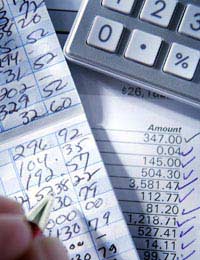Your New Coffee Shop Business: Key Financials Explained

Starting and running a coffee shop will mean you have to become familiar with some key accounting terminology and how these impact on your business. Taking some time to understand the difference between a balance sheet and a profit and loss report is good business practice. With this knowledge you will be able to plan your new coffee shop confident that you understand the financial elements of your business.
It's easy to become confused with accounting jargon, but once you understand the principles behind each report you will begin to see how these pieces of financial information can help you become a better business owner. This in turn will help you operate your business with growing profits that you can sustain over the long term.
Balance Sheet
As you set up and operate your business you will buy items for your enterprise that have to be tracked for tax purposes. You record any asset you have purchased for your business on a balance sheet. The balance sheet can also contain other information such as how much you are owed by suppliers, any tax that you owe and if there are any outstanding loans or debts.If you set-up your business as a limited liability partnership or a limited company, you have to submit your balance sheet to the HMRC each year. Think of a balance sheet as a snapshot of your business at any one time.
Profit and Loss Statement
As its name suggests, your profit and loss statement tracks the income and outgoings of your business. Usually statements are produced yearly to give an indication of how well - or not - a business has been performing.Cashflow Statement
This statement is one of the most important reports for all business owner/managers as it tracks over time the amount of cash or liquidity that your business has. This statement should be kept as up-to-date as you can. Tracking the actual cash in your business is very important as you can then easily spot any problems that might arise early enough to deal with them.Breakeven Point
One of the most important financial ratios that you must learn to calculate is your business' breakeven point. This is the amount of goods or service you must sell to cover all of the fixed and variable costs that went into making your goods, or providing your services.How to work out your breakeven point:
1: Calculate your gross profit
Sales = £5000
Variable Costs = - £2000
Gross Profit = £3000
2: Calculate your gross profit percentage
Gross Profit ÷ Sales
| £3000 £5000 | x | 100 | = | 60% |
3: Calculate your breakeven point
Fixed Costs ÷ Gross profit percentage
Fixed Costs | x | 100 |
£3000 | x | 100 | = | £5000 Monthly sales breakeven point |
Gross Profit Margin
The gross profit margin is the amount of money your business will earn when it sells its goods or services before costs are taken into consideration. This is a useful business ratio to know as you can instantly see what your profit margin is and how - if you reduce your costs - your basic profit margin could be improved.Net Profit Margin
The net profit margin of your business is the companion to the gross profit margin in that it takes into consideration the costs that your business has in making its goods or providing its services. Note that the net profit margin only gives you a net profit figure that taxation then has to paid out of. The Net profit margin is, therefore, not your business' overall profit. Don't forget you still have to pay your taxes!With these three basic pieces of information you can:
- See how your business is actually performing compared to the projections in your business plan.
- Perform any number of 'what if' scenarios to see how making a change to your business could affect it financially.
- See at a glance what your debts are and which companies owe you money.
- Identify areas of you business where costs savings can be made.
- Provide detailed information that investors would need if you need additional finance.
- See if your business is approaching the VAT threshold and needs to register with Customs & Excise.
Accounting and business ratios may take some time to understand, but they are tools that can help you run your business more profitably. What's more, using your cashflow statement together with your profit margin calculations are powerful ways of identifying problems within your business that need urgent attention.
Business Energy With a Difference
If you are looking for business energy or need advanced solutions like remote energy monitoring, new supplies, downgrading or upgrading capacity, have a no obligation chat with Purely Energy.
To find our more get in touch here. or call 0161 521 3400.




